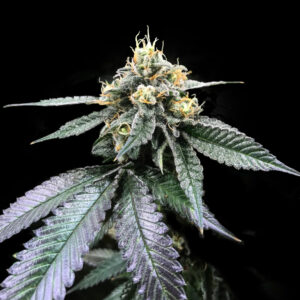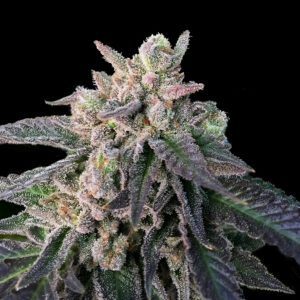Product Details
Regular seeds typically produce more vigorous, hardier male and female cannabis crops. They tolerate stress well without affecting yields. Growing both male and female plants offers unique diversity. Breeders and growers leverage this trait to create novel strains or stabilize genetics.
Besides a refreshing fragrance, Tangie is famous for its thick, resinous buds full of THC. It produces some of the sweetest cannabis concentrates. No wonder it’s won the Cannabis Cup multiple times.
Tangie seeds: True sativa force to reckon with
Tangie seeds develop into sativa-dominant cannabis plants. They contain about 30% indica and 70% sativa genetics. These regular seeds are a cross of Clone Only and Crockett’s Selection. They boast a rich heritage tracing back to the Tangerine Dream strain in the 1990s.
Their unique genetic engineering preserves the coveted traits of the original Tangie strain. You get the good old citrus aromas and flavors with enhanced growth resilience.
Tangerine Dream is the offspring of Californian Orange (Cali-O) and a Skunk hybrid. Its dynamic parents are the reason Tangie is incredibly versatile and delicious.
A redefinition of authentic sweet citrus
Tangie’s diverse genetic profile produces sweet, orange, and exotic flavors. Its dominant terpene is limonene, which contributes to the fruity, tangy citrus aroma.
Some enthusiasts leverage this distinctive scent for aromatherapy to enhance mood. Most people associate citrus fragrance with relaxation.
The flavor and aroma of Tangie are intense and may feature acidic undertones. Some folks pick up hints of exotic wood, spices, and incense.
Produce buds with a mean yet happy punch
Tangie seeds mature into sativa-dominant buds with strong, dynamic, and lasting effects. Some users experience soothing sensations even before lighting up the nugs. The powerful scent has a way of putting you at rest in many ways.
This cannabis strain contains a THC content of 22–24%. It hits hard and fast, so take it slow if you have a low THC tolerance. Its sativa influence takes a cerebral twist that oozes potent euphoria.
The refreshing happiness quickly translates into an energizing buzz. You may want to socialize more with friends and family at this juncture. You experience upliftment as your head clears. Some people become chatty and giggly.
You may also feel the indica influence creeping down on your body slowly. This steady effect could relax your muscles without couch-lock.
Tangie’s euphoric sensations could promote mental focus and creative thinking. Its energizing power may relieve fatigue and make you more productive. Most users also report it alleviates stress, anxiety, depression, and muscle spasms.
Informed cultivation: Get the most of your crop
Tangie seeds are naturally hardy, favoring beginners, but don’t throw caution to the wind. Watch out for notorious pests that may impact yield size and quality.
These weed seeds thrive best outdoors in soil rather than indoors in hydroponics. The former improves the tangy taste of your buds, especially if it’s organic. Consider amending your substrate with compost, peat moss, or worm castings.
This weed strain is a tall grower, stretching up to six feet high. It grows vertically until the fifth week. Make enough allowance in your space to avoid restricting your crop too much.
Tangie develops many branches, giving it a towering and compact stature. Its long and slender twigs may need extra support. They become fragile and more susceptible to breaking off during rain. You can use trellises or bamboo stakes.
This strain responds well to the Sea of Green (SOG) or Screen of Green (ScrOG) techniques. Correct application of these methods may boost yields. Consider topping and fimming your crops for bushy growth and more bud sites.
Tangie flourishes in a warm, dry, Mediterranean-like climate. Wet conditions increase the risk of mold and damage to delicate branches. You can also grow it indoors with proper environmental control. Aim for an optimal temperature of 70–85°F and relative humidity of 40–70%.
Crops grown from Tangie seeds respond well to intense illumination. Ensure they receive ample direct sunlight outdoors. Work with LED or HID grow lights indoors. Set the appropriate distance between the lamps and your crop’s canopy to avoid heat stress.
A well-balanced nutrient regimen is essential for healthy growth and optimal yields. Some of the most crucial minerals are nitrogen, potassium, and phosphorus. Trace amounts of micronutrients like zinc, iron, manganese, and boron also support growth.
Develop a reliable feeding schedule to avoid mistakes mid-growth. Don’t “set and forget.” Instead, regularly monitor your crops for signs of nutrient deficiencies or excesses. Both scenarios can stunt growth. The ideal feeding schedule should increase your yield.
Complement a proper feeding schedule with optimal watering and pH levels. Irrigate your plants consistently while avoiding overwatering. Too much dampness in your cultivation medium can cause root damage.
The ideal pH for growing Tangie in soil is around 6.0 and 5.5 for hydroponics. This factor affects nutrient availability and uptake by plants. A pH imbalance can cause mineral deficiencies and stunted growth. You may end up with lower yields than expected.
Tangie typically flowers in nine or more weeks, producing top-shelf, super sticky buds. Its average yield is 16–19 oz./m2. The ideal harvest time outdoors is late September or early October. It depends on the cultivation conditions.





